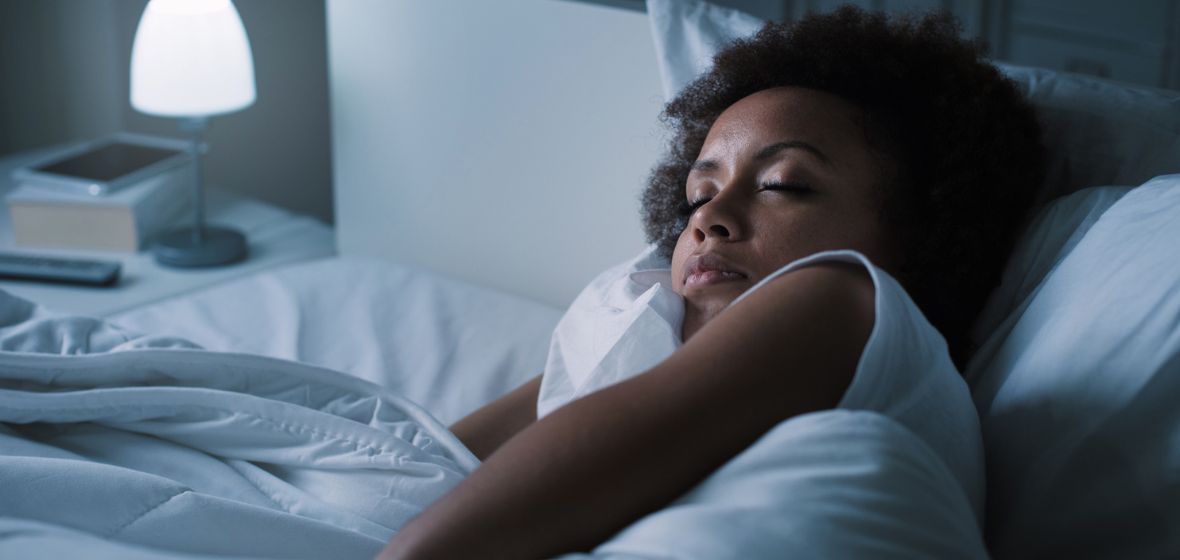
Sleep Health
As the school year is quickly approaching and new routines are forming, it’s vital to get sufficient high-quality sleep to keep you running throughout the day. Proper sleep hygiene benefits both children and adults to achieve this goal and helps make the transition into the school year a bit easier.
What is Sleep Hygiene?
Sleep hygiene is a broad term involving actions that, when utilized consistently, help you fall asleep and stay asleep naturally. Many people of all ages struggle with getting adequate sleep to get them through the day with optimal energy and focus.
The keys to success are: 1) Working with our natural circadian rhythms, and 2) Implementing practices that help promote either wakefulness or sleep onset at the appropriate times.
Circadian rhythm refers to our 24-hour internal clock that signals when the body is asleep vs to be awake. In general, the vast majority of humans will naturally want to sleep when it is very dark outside and be awake with the light of the sun. Once our environment starts getting dark, melatonin (the sleepy hormone) starts to release from your brain to promote sleep. However, another crucial part of our circadian rhythm that is more often forgotten is adequate sleep pressure. This means our brains have to have been awake for a sufficient time period before it can fall back asleep. For adults, this is about 16 hours (see below for typical sleep pressure needs by age).
Therefore, for adults, by planning a rise time roughly 16 hours before the desired bedtime, we are setting ourselves up for success to be able to fall asleep at night without the stress and anxiety of trying to force ourselves to go to sleep earlier. You are in full control of manipulating your rise time in the morning (even though it may be painful for a few minutes!), while on the other hand, it is impossible to force your brain to go to sleep at night. Therefore trying to make yourself go to sleep before you’re actually sleepy actually worsens the problem!
As far as promoting wakefulness in the morning when you are perhaps making yourself get out of bed earlier than you want to, here are some strategies to help. Bright light is the number one driver of wakefulness, so throw open those windows (better yet, go outside!) and get some light in your eyes. In the winter when it tends to be darker for much longer, I highly recommend using a lightbox next to the bed to turn on immediately and give us artificial light. The other drivers of wakefulness are social interaction and physical exercise. Get moving and get going with your to-do list for the day as soon as possible. Caffeine in moderation is also safe and effective to help get going in the morning.
Conversely, when it’s time to promote sleep we need to create an environment that is dark. Black-out curtains and eye-masks are great, simple tools to block out ambient light and allow our melatonin to secrete naturally. While not a strict rule, it’s also typically a good practice to turn off bright light sources such as phones and TVs 20-30 minutes before bed. I say it’s more important, however, to promote whichever activities relax your mind as opposed to worrying too much about screen time. Sleep hygiene is not one-size-fits-all. Although, I do think it’s often far too tempting for children and adolescents to keep a TV or phone on all night which will very much cut into the time needed for sleep, so I do not recommend TVs or phones in the bedroom for those ages. Lastly, our body temperature drops with sleep onset so make the sleep environment a cool temperature as opposed to too warm.
How Much Sleep Should I Get?
Sleep quantity needs to change throughout our lifetime, with children requiring the most due to the intense growth and development that is occurring. The below values are approximate and can vary by the child’s individual development.
- Newborns 1-2 months: approximately 19 hours/day.
- Infants 3-12 months: approximately 15 hours/day.
- Toddler and preschool-aged children: 11 to 14 hours/day. Most children stop napping between ages 3-5.
- School-aged children (6 to 12 years old): 9-12 hours.
- Teenagers (13-17 years old): 9-10 hours, decreasing to 8 hours around age 18. Of note, teenagers’ circadian rhythm naturally is a bit delayed, meaning they naturally desire a later bedtime. Therefore, as school and extracurricular demands increase, meeting this sleep goal can be challenging but is certainly not impossible. Talk to a sleep specialist if your teen is having a difficult time getting to school on time or staying awake for school.
- Adults (18 and older): 7-8 hours. There are some naturally “short sleepers” that function well on less than seven hours each night, but this is very rare at less than 1% of the population.
When it comes to naps, they are a great way to reset and refresh your mind if you’re feeling the effects of a poor night’s sleep or perhaps an extra busy season of life. Shorter naps are better in regard to maintaining sleep hygiene. Studies show that 15-to-20-minute naps are the most restorative, compared to hour-long or more naps that may promote grogginess and difficulty transitioning back to being awake. They will almost certainly delay bedtime, as well.
Why is Uninterrupted Sleep Important?
In a 2016 scientific statement from the American Heart Association, sleep restriction is recognized as a risk factor for adverse cardiometabolic profiles and outcomes, and healthy sleep behavior is recommended to promote ideal cardiac health, along with efforts to address other established risk factors including blood pressure, cholesterol, diet, blood glucose, physical activity, weight, and smoking cessation. Insufficient sleep tends to make adults feel drowsy and less motivated, thereby significantly impacting mental health. Regarding physical health, studies have shown chronic insufficient sleep to be correlated with higher blood pressure, higher incidence of atherosclerosis (clogged arteries), obesity, and subpar immune system performance.
For specifically children and young adults, uninterrupted sleep is crucial for proper growth and development. Uninterrupted sleep allows for the regular secretion of growth hormone and promotes memory consolidation, especially in the second half of the night. As with adults, the quality and length of sleep can significantly impact mood and behavior in children. Unmet sleep needs often translate to jitteriness and inattentiveness, very much mimicking ADHD. Just 30 minutes less sleep than normal can cause lower executive functioning and decision-making skills the next day. An hour less of sleep from normal has been shown to result in poorer behavior metrics.
Conclusion
Sleep hygiene may be compared to your diet. Short-term, crash diets are ineffective in creating long-term, sustainable, balanced health. Similarly, implementing sleep hygiene on an occasional basis is unlikely to be effective. Making healthy sleep habits routine is what results in sustainable change.
If you struggle with irregular sleep, seeing a sleep specialist may help. The UofL Physicians – Sleep Medicine providers are nationally regarded for their expertise in the diagnosis, treatment and care of sleep disorders and can be found at six conveniently located sleep clinics across the region. Visit our website to learn more or schedule your appointment today.









